Customer Feedback
Hi ! How was your experience with us? We apologize for the bad experience and we need to correct them. Let us know what was
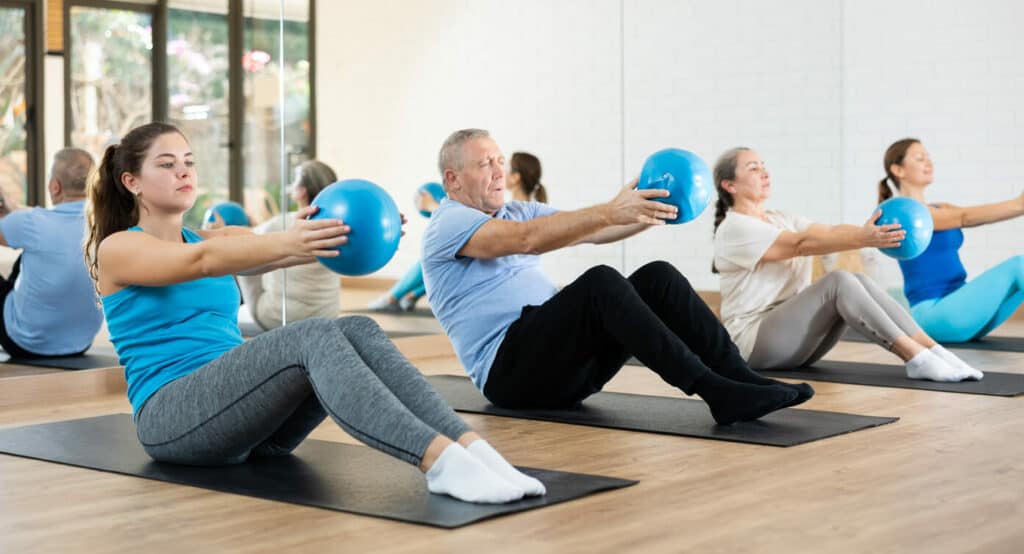
Concerned about your loved one’s frequent falls? Do they have difficulty keeping their equilibrium when walking? Are they having problems with balance in daily living activities (ADLs)?
The CDC reports that 36 million seniors fall every year, resulting in 72 thousand deaths. Falls and accidents in the elderly are largely caused by poor balance. However, with the right exercises and assistive aids, their level of balance, stability, and coordination can be improved.
In this article, we have discussed how balance activities for the elderly are going to help your loved ones get back on their feet without having to worry about tripping again.
Balance exercises for the elderly is particularly focused on improving stability and coordination. Here are some important benefits of balance exercises that lead to a better quality of life in older adults:
Older people are more vulnerable to falls and accidents due to balance disorders. Study shows that falls are one of the common causes of injury-related deaths in the older population and one of the leading causes of these falls is poor balance.
Balance exercises help seniors strengthen the muscles that are involved in maintaining balance, such as pelvic muscles, legs, and ankles. Increased muscle strength improves balance and helps seniors regain control over their movement, hence lowering the risk of falling and injuries.
Stability is linked with the strength of core stability muscles such as the the muscles of lower back and pelvis. Often when older adults have an inactive lifestyle, their core muscles weaken leading to lesser stability in walking. Decreased stability leads to poor balance in the elderly and they lose the ability to stand upright for a long time without falling.
Balance exercises for older adults challenge the ability to maintain the body’s equilibrium and develop their sense of stability. These exercises also strengthen the muscles and improve their level of independence. Activities like standing on one leg, head-to-toe walking, side to side walking, enhance the proprioception in elderly which is basically the body’s sense of position in space. It prevents them from losing their balance while standing.
Poor balance develops this fear of falls in older adults, which limits their willingness to move and actively participate in activities of daily living (ADLs). Whenever they stand or walk, they are at risk of stumbling and getting hurt. This constant worry of losing balance leads to a dependent lifestyle, hence decreasing their mobility.
Balance exercises for the elderly enhance their mobility by improving muscle strength, flexibility, and joint range of motion. As muscles become stronger and more flexible, seniors experience improved mobility, allowing them to move with greater ease. They can enjoy increased freedom in performing activities such as walking, climbing stairs, getting in and out of chairs, and even participating in outdoor fun activities like dancing or gardening.
Balance and posture are closely related and elderly with balance problems often exhibit visible postural deviations. When their bodies feel unstable while standing upright, they instinctively adapt compensatory positions to find a stable base of support. Such people usually have a forward head posture with rounded shoulders or a swayback posture with their belly protruding out and the trunk leaning back.
Balance exercises for the elderly also play a pivotal role in supporting the spine and promoting an upright and aligned posture. By strengthening the core, balance activities help to counteract the effects of muscle imbalances that often occur with age. Improved posture not only contributes to better balance and stability but also alleviates strain on the spine, reducing the risk of back pain and discomfort.
The term ‘Balance Confidence’ is frequently used for the elderly which refers to their confidence in performing daily living activities without losing balance. Seniors who have had a history of falls or are getting back on their feet after a longer period of bed rest can have lower confidence and an enhanced fear of tripping again. They are more likely to avoid physical activities that require standing or walking. This avoidance can result in a sedentary and dependent lifestyle.
As balance exercises for seniors improve their stability and balance, these exercises also give them a sense of self-assurance. When they are aware that these exercises are improving their balance, they become more confident in their ability to navigate their surroundings. Their fear of accidents diminishes, letting them actively participate in daily activities and have a better quality of life.
Balance exercises for the elderly improve balance, stability, and coordination. While there are many high-level balance exercises for seniors, you should consider their current level of balance, any preexisting health conditions, and their personal preferences when choosing balance exercises.
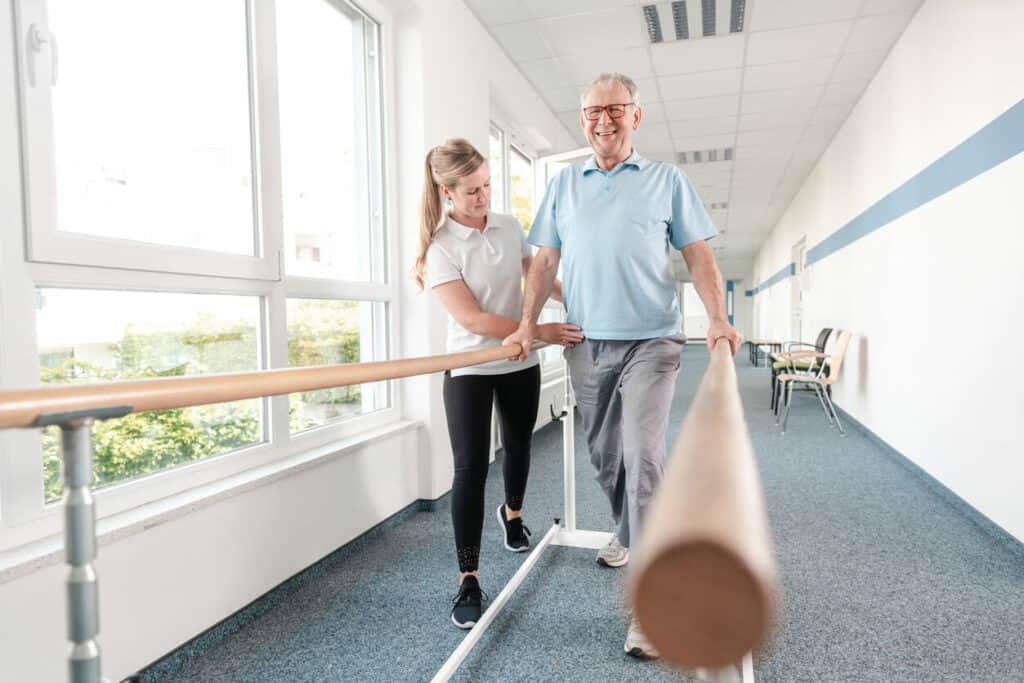
Here, we have listed 10 easy and effective exercises to improve balance in older adults:
This is a very common balance exercise for seniors that helps improve balance and stability. Hold a stable surface like a grab bar or a chair for support, then lift one leg off the ground and hold the position for as long as you can. Switch legs and repeat.
Heel-to-Toe Walk challenges the elderly’s balance and coordination. Stand straight with your head up and your eyes looking forward. Find an even surface and walk over it by placing the heel of one foot directly in front of the toes of the other foot with each step. Take it slow and focus on maintaining a steady balance throughout.
Caregivers should stay close and hold the elderly if they are unable to balance and are about to stumble while doing the exercise.
Seated marching is a beneficial exercise for improving balance and stability in individuals with limited mobility or difficulty standing. Sit upright in a sturdy chair with your feet flat on the floor. Lift one knee at a time, bringing it towards your chest, and then lower it back down. Alternate between legs like you would in an actual march.
Focus on maintaining good posture and engaging your back and pelvic muscles throughout the exercise. You can gradually increase the speed or the number of repetitions as your balance improves.
It is an effective way to improve balance and coordination. Stand on a balance board and try to maintain stability while it tilts in different directions. Start with a stable board and gradually progress to a more challenging, wobbly board. The elderly might trip while standing on a balance board, so caregivers are advised to assist them while doing this exercise.
This exercise trains the body to continually shift its center of gravity on uneven surfaces without falling. Find unstable or uneven surfaces, such as foam pads, balance cushions, or inflatable discs. Place one foot on the surface and slowly shift your weight onto that foot without losing balance. Take small steps and gradually progress to larger ones as your confidence and balance improve. Remember to prioritize safety by having stable support or the older adult’s caregiver nearby if needed.
It is a great balance exercise that helps strengthen the upper body. Stand facing a wall with your feet shoulder-width apart. Place your hands flat against the wall at shoulder height and slightly wider than shoulder-width apart. Lean forward, bend your elbows, and lower your chest towards the wall while keeping your body aligned.
Push back to the starting position, engaging your chest, arms, and core muscles. Focus on maintaining a stable stance and controlling your movements throughout the exercise.
This exercise strengthens leg muscles and enhances balance. Stand with feet hip-width apart and extend one leg in front of you. Imagine a clock face in front of you. Reach your arms forward like clock hands and aim towards different numbers on the clock face while maintaining balance on your standing leg. Return to the starting position and repeat on the other side. Gradually increase the reach to make it more challenging.
Stair climbing helps improve gait, balance, and muscle strength. Find a sturdy set of stairs, or use a step platform with a secure surface. Stand facing the stairs, placing one foot flat on the step. Push through your heel to lift your body upward, bringing the opposite foot onto the step.
Step back down to the starting position one foot at a time. Begin with a comfortable number of repetitions and increase as your balance improves. Always ensure the stairs or step platform are secure and stable before performing this exercise.
The grapevine exercise challenges your balance as you shift your weight and change directions, while also engaging the muscles in your legs and hips.
Take a step to the side with your right foot, crossing it behind your left foot. Then, step to the side with your left foot, bringing it out to the side. Finally, step your right foot out to the side again, uncrossing it from behind your left foot.
Repeat this pattern, stepping to the side and crossing behind, then stepping out to the side and uncrossing, in a fluid motion. Start with slow and controlled movements, and slowly increase the speed as per your comfort.
Yoga is a holistic exercise that offers numerous benefits for balance, flexibility, strength, and mental well-being. It involves a series of poses that improve proprioception and stability such as the tree pose, where you stand on one leg with the other foot pressed against your inner thigh.
Other balancing poses like the mountain pose and the warrior pose also help improve stability. Attend a senior-friendly yoga class or follow online tutorials specifically designed for older adults for proper guidance.
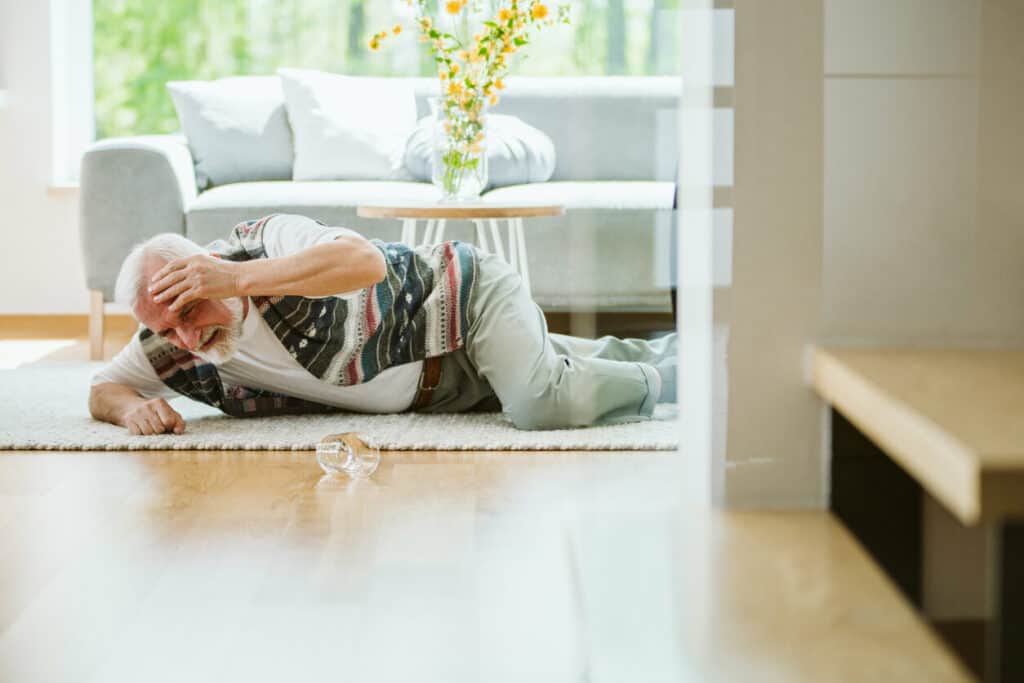
Seniors might avoid balance exercises because of certain reasons. You need to understand what’s making your loved ones avoid balance activities, so you can find effective solutions. Here are some common reasons that might be stopping your loved ones from doing balance exercises:
Seniors with a history of falls or trauma are more likely to have a fear of getting hurt again. This fear leads to anxiety and limits their mobility. They tend to avoid physical activity that might challenge their balance abilities.
As the elderly age, they suffer from multiple diseases that contribute to constant pain and discomfort. The symptoms of pain or discomfort can aggravate with exercise, stopping them from engaging in balance training. Consult your physiotherapist if your elderly loved one is experiencing an increase in pain or discomfort while doing exercises.
Just like other physiological changes, older adults also experience a decline in their cognitive abilities. They might have conditions like dementia, Parkinson’s, depression, etc. These diseases affect their ability to follow instructions, remember the sequence of movements, or make decisions, which makes it challenging for them to perform balance exercises effectively and safely. The term ‘blocked practice’ is used in geriatrics which basically means the elderly are required to repeat the same task multiple times uninterrupted to memorize it. It is a very essential technique to cope with the cognitive barrier.
Low self-efficacy means seniors might not believe in their ability to perform any given task. Usually, older adults require assistance in ADLs which could make them doubt their abilities to perform balance exercises too. This self-doubt and lack of confidence can be a significant barrier to starting and maintaining balance exercises. Encourage them to engage in balance exercises and positively reinforce their progress to build their confidence.
The elderly might think of exercises as exhausting and boring. A monotonous routine of balance exercises can demotivate them from engaging in balance training. Exercise should be fun and rewarding, so they won’t see it as a treatment, but rather as a fun activity they can enjoy.
Balance aids are assistive tools that improve stability, balance, and risk of falls. They provide support by redistributing the weight and enabling the elderly to move with more confidence. Balance training equipment refers to a range of devices specifically used in exercises that help regain balance, coordination, and stability.
Here is a list of some common balance aids and equipment used in balance training:
Balance Aid/Equipment | Image | Function |
|---|---|---|
| Canes | 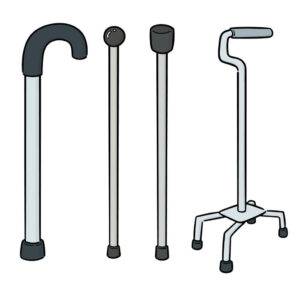 | – Provide some support while walking – Relieve pressure on joints and reduce pain – Assist in weight distribution and reduce risk of falls – Used in case of weakness in a limb or trunk |
| Walkers |  | – Assist in walking – Provide a larger base of support – Allow greater mobility – Lower risk of falls – Used in case of poor balance or lower extremity impairment |
| Rollators | 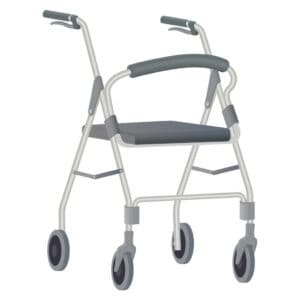 | – Assist in walking with wheels – More mobile frame of support – Often offers a seat to sit during longer walks or fatigue – Used in people with muscle weakness, deteriorated balance and stamina |
| Grab Bars |  | – Provide support in stand-to-sit, sit-to-stand, and sit-to-sit transfers -Used for those who need minimal to moderate support – Often installed next to a toilet seat, in a bathtub, or shower enclosure, etc |
| Hand Rails |  | – Assist walking in an indoor or outdoor environment – Minimize risk of slip and fall – Often installed in stairways, hallways, outdoor entrances, etc |
| Wobble Boards | 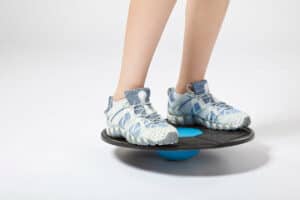 | – Train seniors to control their center of gravity on an uneven surface – Improve proprioception, posture, and standing balance |
| Swiss/Exercise/Physio Balls | 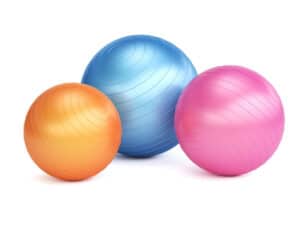 | – Help seniors in postural correction – Improve balance, muscle strength, and mobility – A common tool used in rehab programs |
| Balance Disc/Wobble Cushion |  | – Used in improving stability and balance in elderly – Enables strengthening of core body muscles – Improves proprioception after injuries/trauma |
| Bosu/Half Yoga Ball | 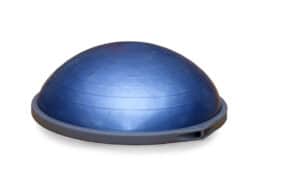 | – Used in both balance as well as strength training – Increases stability, balance, mobility, and flexibility of body – Used in exercises for fall prevention |
Due to poor balance, older people are more vulnerable to falls and injuries. So, when they’re left unsupervised while using this equipment, they might fall and hurt themselves. So, caregivers must assist them while using devices.
If you’re a caregiver and unsure about how to use a balance tool, seek help from your elderly’s physiotherapist. Ask them to show you how it’s used and how you could assist your elderly while using it. This will help prevent accidents and ensure the safety of your loved ones.

Older people can often feel unwilling and discouraged to participate in balance training. You will need to find ways to engage them for the greater good. We have come up with four tips to help you out with encouraging seniors for these balance exercises.
Initially complex, high-level balance exercises can be overwhelming for older people and can make them agitated. Begin with simple, manageable exercises that are easy to understand and perform. Start with easier exercises like toe raises, seated marching, or side leg lifts to gradually build their confidence. After all, their comfort and well-being should come first. So, let them progress at their own pace.
Safety should be the top priority when engaging senior citizens in balance exercises. Create a safe environment, and remove any obstacles from the exercise area.
Provide stable support, such as chairs or handrails, for them to hold onto if needed. Encourage seniors to wear appropriate footwear with non-slip soles to prevent accidents. Supervise them when they’re performing exercises. Assist them by holding their hands in exercises that have a higher falling risk.
Seniors usually have a hard time engaging in physical activity due to their lack of interest. You need to make exercises fun to maintain their enthusiasm. Introduce games that focus on balance. Ask them to toss a soft ball back and forth while standing on their toes, or draw a zig-zag pattern on the floor and have them walk over it. By making it fun, you are more likely to keep them motivated and committed to their balance training.
Group exercise classes are a great way to encourage social interaction as well as create a supportive atmosphere for older adults. Consider organizing exercises that involve partners or teams. Arrange group yoga classes. Take them to an outdoor park, play music, and have them slow dance like grapevine exercise. Group activities boost motivation and make the exercise sessions more enjoyable for everyone.

As caregivers help seniors with most of their tasks, they can play a critical role in improving seniors’ balance by providing personalized care and supervision. Let’s explore how caregivers can play their role in assisting with exercises to improve balance in older adults.
Since caregivers spend more time with the elderly, they are the first ones to notice any balance impairments or mobility limitations in seniors. Caregivers can observe changes in their walk, how they stand, whether they’re stumbling more, or if they are requiring more assistance with ambulation, and discuss it with their physiotherapist to come up with tailored balance exercises.
Caregivers are responsible for supervising and assisting older adults to prevent falls and injuries while performing balance activities. They also monitor seniors to ensure they’re doing the exercises correctly. Caregivers also track the progress in their balance and share it with the healthcare team.
With the guidance of a therapist, caregivers can make necessary environmental adjustments for seniors to improve their balance and reduce the risk of falls. They can declutter the space, remove unnecessary items from pathways, add better lighting, remove glare, and arrange handrails and grab bars where necessary.
Find a caregiver who has expertise in working with seniors on balance and mobility issues to ensure your loved ones receive specialized care. A qualified senior caregiver understands the importance of individualized care, recognizing that every senior has unique strengths, limitations, and preferences.
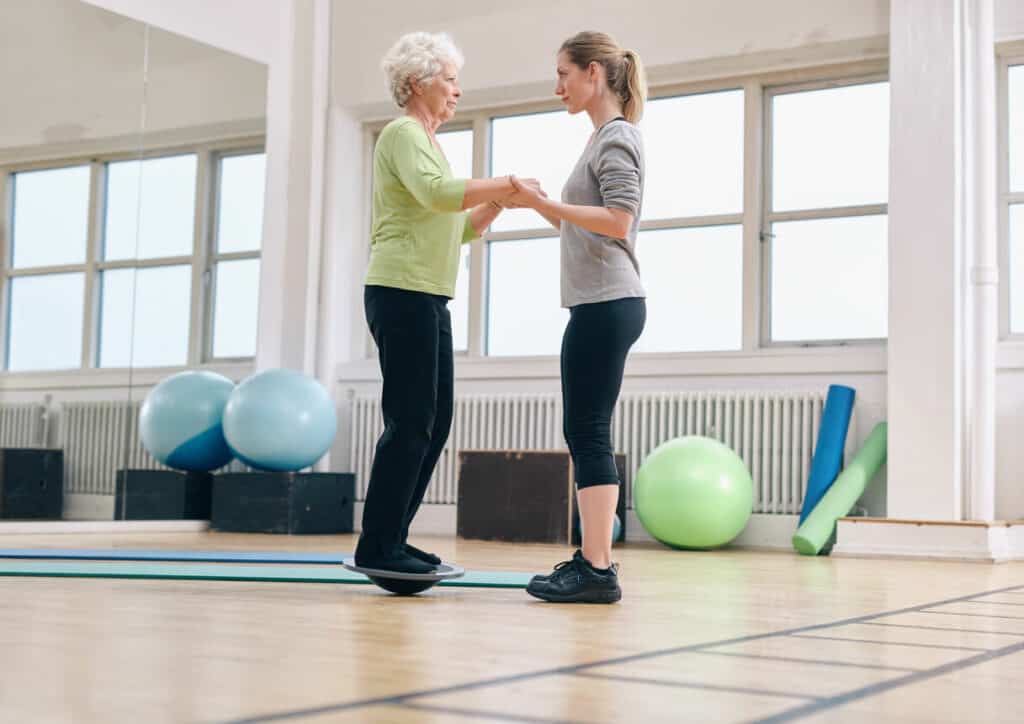
Due to declining motor control, poor balance is a common complaint in seniors. Although balance may not be recovered completely, balance exercises for older adults help improve balance and stability to a significant level.
These exercises increase muscle strength, coordination, and proprioception, hence resulting in an improved level of independence. Moreover, certain barriers might stop them from engaging in these activities, but caregivers can play their role in finding creative ways to keep their interest in exercises.
At Amy’s Eden, our caregivers are trained to assist seniors with performing these balance exercises to restore their balance. Contact us today if you’re looking for a specialized senior caregiver for your loved one.
Get care >
Hi ! How was your experience with us? We apologize for the bad experience and we need to correct them. Let us know what was

Ever wondered what hospice care really is? You’re not alone! It’s a term many of us hear, but don’t fully understand. Let’s clear up the

When your doctor announces that your loved one has a late-stage disease, it can feel like the world stops turning. The days that once felt

Having a loved one struggling with a terminal illness will take its toll even on the most healthy individual. It’s even more difficult when you

